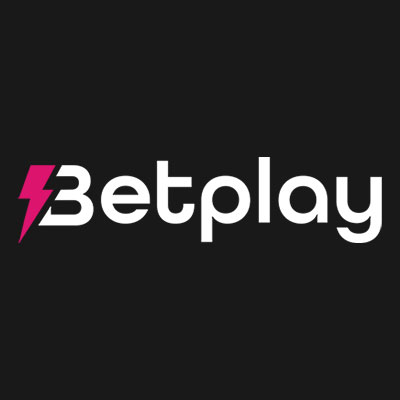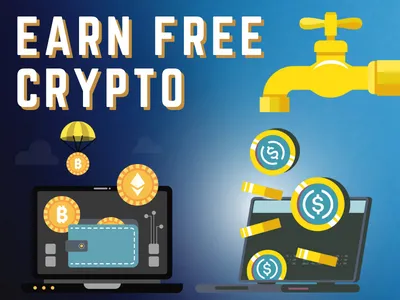Think of a blockchain as a gigantic Hot Wheels circuit, in which all cars circulating on it are completely equal. That can be the case for blockchains like Bitcoin or the early days of Ethereum, in which all units/tokens were fungible, or equal and interchangeable. Then imagine news cars of various colors and designs get introduced in the circuit which can still circulate on it but are not interchangeable as they have distinctive characteristics from the other tokens circulating on the circuit; that is what NFTs are, Non Fungible Tokens or “unique non interchangeable tokens”.

Similar to cryptocurrencies but instead of using crypto exchanges, NFTs are generally traded on specific NFT marketplaces like OpenSea, although some crypto exchanges like Crypto.com have broadened their offer to include their own inhouse marketplace for NFTs.
Origins
As we've discussed, the concept of non-fungible tokens gained significant traction in 2021 with Beeple's record-breaking $69 million NFT sale. But the history of NFTs stretches back further than many realize. Let's delve into this fascinating journey.
Coloured Tokens
In 2012, Meni Rosenfield published a paper introducing the concept of "Coloured Tokens'' to the Bitcoin blockchain. The idea was to use these to represent and manage real-world assets and prove ownership of those assets on the blockchain without the need for a third party independent evaluator.
These colored tokens would have an additional token element. These elements would help determine their use and make each one of them unique. However, this concept could never be implemented because of the limitations of the Bitcoin blockchain. Thanks to this idea though, other entrepreneurs conducted numerous experiments which would eventually lead to the creation of NFTs as we know them today.
Quantum
Quantum, the first modern NFT, was minted by Kevin McCoy and Anil Dash on the Namecoin blockchain on May 3rd, 2014. It was a video that McCoy's wife had made, and he sold it to Dash for $4. This was done as part of a live presentation for the Seven on Seven Conference in New York City, and they originally called them "monetized graphics." In the years that followed, a lot of developments and improvements were made to NFTs, and although platforms were built on the Bitcoin blockchain to support NFTs, it was Ethereum that took over the NFT markets, and it has reigned almost unopposed since.
The Rise of Ethereum NFTs
Terra Nullius was the first NFT to be minted on the Ethereum blockchain. It was minted on the 7th of August in 2015, and the goal was to let its owner stake their claim on the blockchain by allowing them to write a short message in their NFT. That same year, Etheria was launched, and it was the first NFT project. This launch was made at DEVCON 1, Ethereum's first developer conference that was held in London three years after the launch of Ethereum. It had 457 tradeable hexagonal tiles in the collection, but most of these were unsold until March of 2021.

The name NFT gained its popularity with the release of the ERC-721 standard tokens in 2017. ERC-721 are tokens on the Ethereum blockchain that are non-fungible and are all individual. In 2021, the Bored Ape NFT collection launched on Ethereum’s blockchain, marking a significant moment in the industry.
Ordinals, Bitcoin equivalent to NFTs
As we have seen above, earlier plans for Bitcoin NFT’s were already in motion but it was only very recently that, with the 2021 Taproot Bitcoin upgrade, it is now possible to inscribe metadata on Satoshis, the atomic unit of BTC (1BTC=100’000’000 satoshis). Just like CryptoKitties clogged the ETH network back in 2017, Bitcoin ordinals also saturated the Bitcoin transaction in April 2023 taking the Bitcoin miners rewards of 6.25 BTC on average to almost 12 BTC per block when factoring in the transaction fees for inscribing the satoshis with Bitcoin ordinals.
Valuation Model of NFTs: Understanding NFT Pricing
The valuation of NFTs can be a complex process that involves various factors. Unlike cryptocurrencies, which derive their value from market demand and supply, remember that when you buy NFTs, the NFT value is derived from their uniqueness and the perceived value assigned by buyers.
What are NFTs used for?
NFTs are not exclusively for art or digital assets. They are a digital certificate of ownership on the blockchain. What is ownership of what? Well, anything you can think of, here’s a couple of notable examples:
-
Group membership: Bored Ape Yacht Club, a collection of 10’000 digital art NFTs that provide access to limited edition merchandise and real world exclusive events.
-
Physical assets: ICecap and Tiamonds tokenization of physical diamonds helps users trade, manage and redeem physical diamonds with ease.
-
Gaming: Ev.io, the Solana based browser fps game has turned their in-game skins into NFTs which players can use to earn more SOL per kill, or rent to other players and get a small income from it.
-
Gambling: Numerous crypto casinos have incorporated a native token into their games, as rewards and bonuses for players. BetFury rewards players with BFG tokens, these digit assets (NFTs) can be traded in for cryptocurrency or used at the casino.
What factors determine the demand?
-
Rarity: Rarity is a crucial factor in determining the value of an NFT. The scarcer an NFT is, the more valuable it becomes. Collectors and investors are often willing to pay a premium for exclusive and limited-edition NFTs.
-
Artist Reputation: The reputation and popularity of the artist or issuer, behind an NFT can significantly impact its value. Established artists with a strong following tend to command higher prices for their creations.
-
Historical Significance: NFTs that hold historical significance, such as being the first of their kind or associated with a significant event, often attract higher valuations due to their cultural importance.
-
Utility and Functionality: Some NFTs provide additional utility or functionality within virtual spaces or metaverses, making them more valuable to users seeking enhanced experiences.
-
Scarcity within Collections: NFTs that are particularly scarce within a collection or series can gain added value as collectors seek to complete their sets. Consider NFTs like Bored Ape Yacht Club or Loaded Lions, NFT’s with scarcer features will fetch more interest from potential buyers.
-
Interoperability: NFTs that can be used across multiple platforms or virtual worlds may have increased appeal and value due to their versatility.
-
Demand and Hype: Market demand and the level of hype surrounding an NFT or its associated creator can drive prices to extraordinary levels.
It's essential to note that the NFT market can be highly speculative, and valuations can fluctuate dramatically based on market sentiment and trends.
Most Popular Blockchains for NFTs
While NFTs were experimented with on various blockchains, Ethereum quickly emerged as the leading platform for NFT development and trading. The ERC-721 standard, introduced in 2017, played a pivotal role in establishing Ethereum's dominance in the NFT space. Its unique attributes and extensive developer support made it the go-to choice for NFT projects.
However, as the demand for NFTs grew, other blockchains recognized the opportunity and began offering their solutions for NFT creation and trading. Some of the most popular blockchains for NFTs, besides Ethereum, include:
-
Binance Smart Chain (BSC): Binance Smart Chain, an Ethereum-compatible blockchain, gained popularity due to its lower transaction fees and faster processing times, attracting NFT projects looking for more cost-effective solutions.
-
Flow: Flow blockchain was designed explicitly for NFTs and gaming applications. Its focus on scalability and user-friendly experience has attracted notable NFT projects and high-profile partnerships.
-
Polygon (formerly Matic Network): Polygon is a layer-2 scaling solution for Ethereum that offers faster and cheaper transactions, making it an attractive alternative for NFT projects looking to avoid congestion on the Ethereum mainnet.
-
Solana: Solana gained attention for its high throughput and low transaction fees, making it a suitable choice for NFT projects that require fast and efficient blockchain infrastructure.
-
Tezos: Tezos provides a robust and self-amending blockchain, which has found favor among NFT creators looking for a secure and flexible platform.
Each blockchain offers its unique features, and the choice of platform often depends on the specific requirements and priorities of the NFT project.
Money Laundering, Tax evasion and realized “Profits” and “Losses”
If you are like me you may understand why NFTs with clear utility get a high valuation but you may still be wondering why somebody would pay obscene amounts of crypto for digital “art” that doesn’t really look like much.
The art industry has long been used to preserve value but also for elaborate tax evasion or money laundering schemes, that coped with NFT marketplaces where there are no KYC procedures can result in the wild west. Anybody with illegal funds could create their own “art collection” , sell it for multiple millions to anonymous wallets and have clean money, assuming their local tax agency sees no problem. You could also “create” losses by selling to an “anonymous” wallet, valuable NFTs for a small fraction of their initial cost, effectively lowering your next tax bill, since you would be declaring significant “losses”.
What is NFT Gambling?
Crypto gambling is a collective term for playing at offshore crypto casinos with digital assets such as Bitcoin and Ethereum. However, in the past few years, everything has drastically changed. The introduction of a new digital currency known as NFTs has surfaced.
Their intrinsic value makes them great to offer as a one-of-a-kind prize or tokens for players to trade in as bonuses. Additionally, players can bet with NFTs instead of cryptocurrency, or they can wager crypto and stand a chance of winning the best NFTs.
In some instances, offshore casinos will offer loyal players NFTs as a reward.The incorporation of NFTs in gambling sites is still in its developmental stages, and every crypto casino NFT takes a different approach.
Conclusion
NFTs have revolutionized the art and gaming industries, and now they're making their way into other industries and bringing all their advantages. Next time you're about to create or invest in a new NFT, remember that they have been around for a long time and it's not just a hype of the last couple of years. They deserve your respect but remember there are also a lot of opportunities and risks involved.












